Blood sugar level over 200. Effective Strategies to Quickly Lower Blood Sugar Levels Above 200 mg/dL
How can you rapidly reduce high blood sugar. What are the risks of prolonged hyperglycemia. Which medications and lifestyle changes can help manage elevated glucose levels. When should you seek immediate medical attention for high blood sugar.
Understanding High Blood Sugar and Its Implications
High blood sugar, also known as hyperglycemia, is a common concern for individuals with diabetes. Blood glucose levels exceeding 200 mg/dL are considered significantly elevated and require prompt attention. Prolonged hyperglycemia can lead to various complications, making it crucial to understand effective strategies for quick blood sugar reduction.
What Causes Blood Sugar to Rise Above 200 mg/dL?
Several factors can contribute to blood sugar spikes:
- Insufficient insulin or medication
- Overeating or consuming high-carbohydrate foods
- Stress or illness
- Lack of physical activity
- Certain medications
Identifying the underlying cause is essential for implementing appropriate corrective measures and preventing future occurrences.
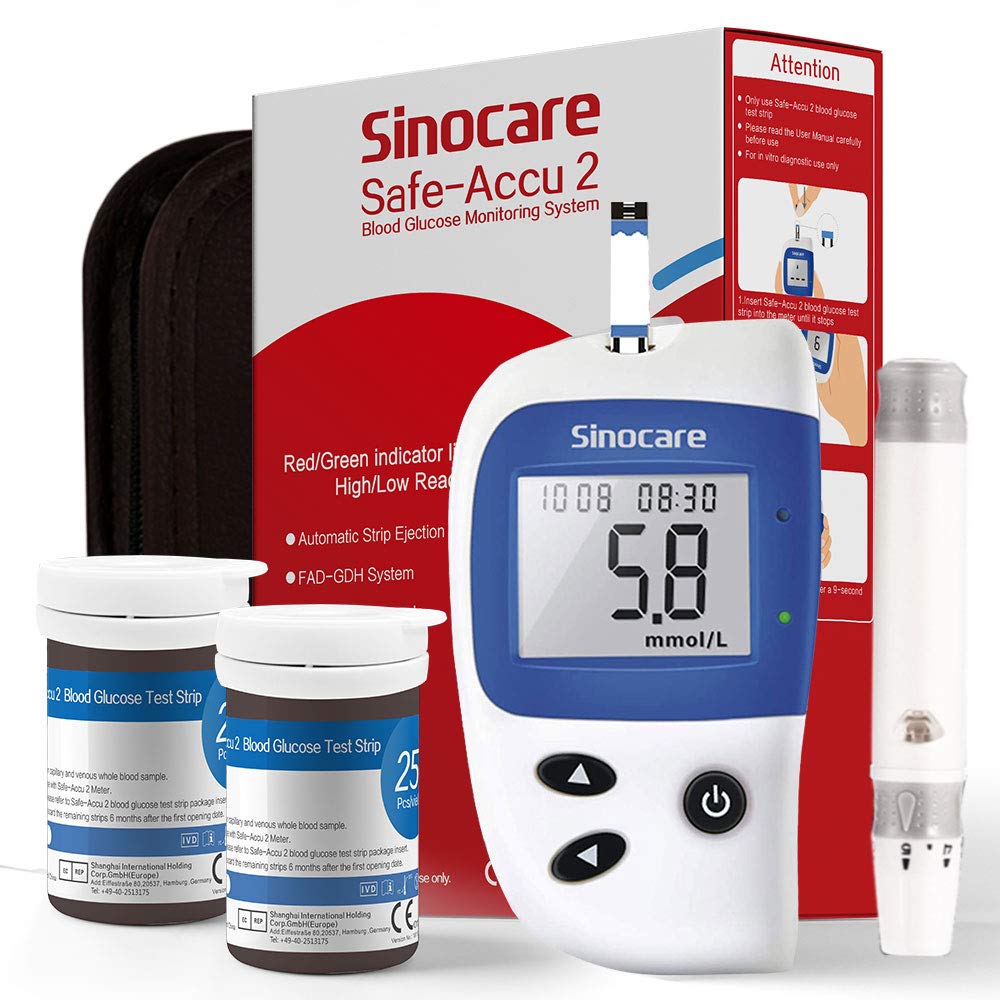
Immediate Actions for Lowering Blood Sugar Quickly
When faced with blood sugar levels over 200 mg/dL, taking prompt action is crucial. Here are some effective strategies to bring down high blood sugar rapidly:
1. Administer Insulin Correctly
For individuals who use insulin, proper administration is key to managing high blood sugar. However, before taking insulin, it’s important to check for ketones, especially if blood sugar levels exceed 250 mg/dL.
Why check for ketones? High blood sugar combined with insufficient insulin can lead to diabetic ketoacidosis (DKA), a serious condition requiring immediate medical attention. If ketone levels are moderate to high, intravenous fluids may be necessary, and self-administering insulin might not be effective.
If ketone levels are low to moderate, a correction dose of insulin can be administered. This dose is calculated based on your personal correction factor, which indicates how much 1 unit of insulin will lower your blood sugar. For instance, a correction factor of 1:50 means 1 unit of insulin will decrease blood sugar by 50 points.
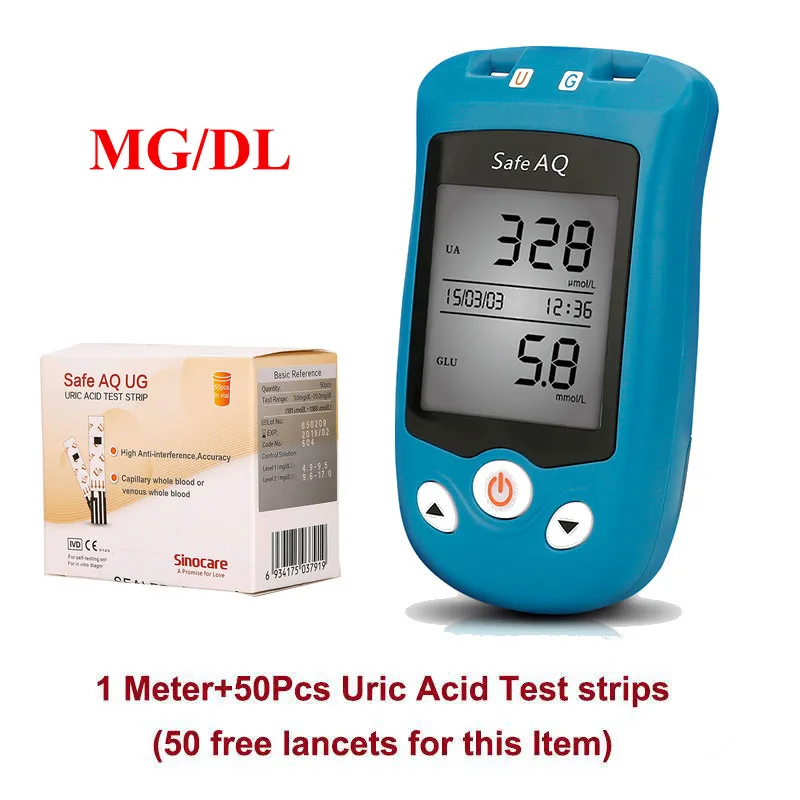
2. Consider Intramuscular Insulin Injection
In cases of severe hyperglycemia (blood sugar over 250 mg/dL), injecting insulin into muscle tissue rather than subcutaneous fat can lead to faster absorption. This method, known as intramuscular injection, should only be used occasionally and under guidance from a healthcare professional, as it can cause bruising and is not suitable for regular insulin administration.
3. Explore Inhaled Insulin Options
Afrezza, a rapid-acting inhaled insulin, offers a quick-acting alternative for managing high blood sugar. While it may not replace all insulin needs, many individuals find it useful in addition to their regular insulin regimen due to its rapid onset of action. Consult with your healthcare team to determine if inhaled insulin is appropriate for your diabetes management plan.
Lifestyle Interventions for Immediate Blood Sugar Reduction
In addition to medication-based approaches, certain lifestyle interventions can help lower blood sugar quickly:

1. Engage in Physical Activity
Exercise can significantly impact blood sugar levels by increasing insulin sensitivity and glucose uptake by muscles. A brisk walk, light jog, or even dancing for 15-30 minutes can help lower blood sugar rapidly. However, if ketones are present or blood sugar is extremely high, exercise should be avoided until levels stabilize.
2. Hydrate Adequately
Drinking water can help dilute blood sugar concentration and promote its excretion through urine. Aim for at least 8 ounces of water every hour when blood sugar is elevated. Avoid sugary drinks or those containing caffeine, as they may further increase blood glucose levels.
3. Practice Stress-Reduction Techniques
Stress can elevate blood sugar levels by triggering the release of hormones that counteract insulin’s effects. Engaging in relaxation techniques such as deep breathing, meditation, or yoga can help lower stress and, consequently, blood sugar levels.
Preventing Blood Sugar Roller Coasters
While addressing high blood sugar is crucial, it’s equally important to avoid overcorrecting, which can lead to hypoglycemia (low blood sugar). This cycle of highs and lows, often referred to as the “blood sugar roller coaster,” can be exhausting and dangerous.

To prevent this, consider the following strategies:
- Monitor blood sugar frequently when making corrections
- Wait at least 2 hours before administering additional insulin to avoid stacking doses
- Use a continuous glucose monitor (CGM) if available to track trends and make informed decisions
- Work with your healthcare team to fine-tune your insulin regimen and correction factors
Long-Term Strategies for Blood Sugar Management
While quick interventions are necessary for immediate blood sugar reduction, implementing long-term strategies is essential for overall glucose control:
1. Adhere to Medication Schedules
Consistently taking prescribed medications, including insulin and oral antidiabetic drugs, is crucial for maintaining stable blood sugar levels. Set reminders or use pill organizers to ensure you don’t miss doses.
2. Follow a Balanced Diet
A diet rich in fiber, lean proteins, and healthy fats can help stabilize blood sugar levels. Consider working with a registered dietitian to create a personalized meal plan that aligns with your diabetes management goals.

3. Regular Physical Activity
Incorporate regular exercise into your routine to improve insulin sensitivity and overall glucose control. Aim for at least 150 minutes of moderate-intensity aerobic activity per week, spread over several days.
4. Monitor Blood Sugar Regularly
Frequent blood glucose monitoring allows for early detection of highs and lows, enabling prompt interventions. Use a blood glucose meter or CGM as recommended by your healthcare provider.
When to Seek Medical Attention for High Blood Sugar
While many cases of high blood sugar can be managed at home, certain situations require immediate medical attention:
- Blood sugar levels consistently above 300 mg/dL despite home interventions
- Presence of moderate to large ketones in urine
- Symptoms of diabetic ketoacidosis, such as nausea, vomiting, abdominal pain, or fruity-smelling breath
- Signs of dehydration, including extreme thirst, dry mouth, and decreased urination
- Confusion or altered mental status
In these cases, prompt medical evaluation and treatment are essential to prevent serious complications.

Emerging Technologies for Blood Sugar Management
Advancements in diabetes management technology offer new tools for monitoring and controlling blood sugar levels:
1. Continuous Glucose Monitors (CGMs)
CGMs provide real-time glucose readings and trend information, allowing for more proactive management of blood sugar levels. Some systems can even predict future glucose trends, enabling early intervention to prevent highs and lows.
2. Closed-Loop Insulin Delivery Systems
Also known as artificial pancreas systems, these devices combine CGM technology with insulin pumps to automatically adjust insulin delivery based on real-time glucose readings. This can help maintain more stable blood sugar levels and reduce the risk of severe hyperglycemia or hypoglycemia.
3. Smart Insulin Pens
These devices track insulin doses and timing, providing reminders and helping to prevent dosing errors. Some models can even suggest correction doses based on current blood sugar levels and insulin on board.

Incorporating these technologies into your diabetes management plan can provide valuable insights and improve overall glucose control. Discuss the suitability of these options with your healthcare team.
The Role of Education in Blood Sugar Management
Empowering individuals with diabetes through education is crucial for effective blood sugar management. Understanding the following aspects can significantly improve one’s ability to handle high blood sugar situations:
1. Carbohydrate Counting
Learning to accurately count carbohydrates helps in determining appropriate insulin doses and preventing blood sugar spikes after meals. This skill is particularly important for those using insulin-to-carb ratios for mealtime insulin dosing.
2. Recognizing and Responding to Glucose Trends
Understanding how various factors affect blood sugar levels enables more proactive management. This includes recognizing patterns related to food intake, physical activity, stress, and medication effects.
3. Sick Day Management
Illness can significantly impact blood sugar levels. Learning how to adjust insulin doses, increase fluid intake, and monitor for complications during sick days is essential for preventing severe hyperglycemia or DKA.

4. Proper Use of Diabetes Technology
For those using insulin pumps, CGMs, or other diabetes management devices, comprehensive training on their proper use and troubleshooting is crucial for optimal outcomes.
Consider participating in diabetes education programs or working with a certified diabetes educator to enhance your knowledge and skills in managing blood sugar effectively.
The Psychological Aspect of Blood Sugar Management
Managing high blood sugar and diabetes, in general, can have significant psychological impacts. Addressing the mental health aspects of diabetes care is crucial for overall well-being and successful glucose management:
1. Dealing with Diabetes Burnout
The constant vigilance required for diabetes management can lead to burnout. Recognizing signs of burnout, such as feeling overwhelmed or neglecting self-care, is important. Strategies to combat burnout include setting realistic goals, seeking support from loved ones or support groups, and working with your healthcare team to simplify your management plan when possible.

2. Managing Anxiety and Depression
Individuals with diabetes are at higher risk for anxiety and depression. These conditions can make it more challenging to manage blood sugar effectively. If you’re experiencing persistent feelings of sadness, hopelessness, or anxiety, don’t hesitate to reach out to a mental health professional. Many therapists specialize in working with individuals with chronic health conditions like diabetes.
3. Developing a Positive Mindset
Cultivating a positive attitude towards diabetes management can significantly impact your ability to handle challenges like high blood sugar. Focus on the aspects of your care that you can control, celebrate small victories, and view setbacks as learning opportunities rather than failures.
Remember, managing diabetes is a marathon, not a sprint. Be patient with yourself and acknowledge the effort you put into your health every day.
In conclusion, effectively managing high blood sugar requires a multifaceted approach combining prompt interventions, long-term lifestyle modifications, and ongoing education. By understanding the various strategies available and working closely with your healthcare team, you can develop a personalized plan to keep your blood sugar levels within target range, reducing the risk of complications and improving overall quality of life. Remember, while dealing with high blood sugar can be challenging, with the right knowledge and tools, it’s entirely manageable. Stay proactive, stay informed, and most importantly, stay committed to your health.
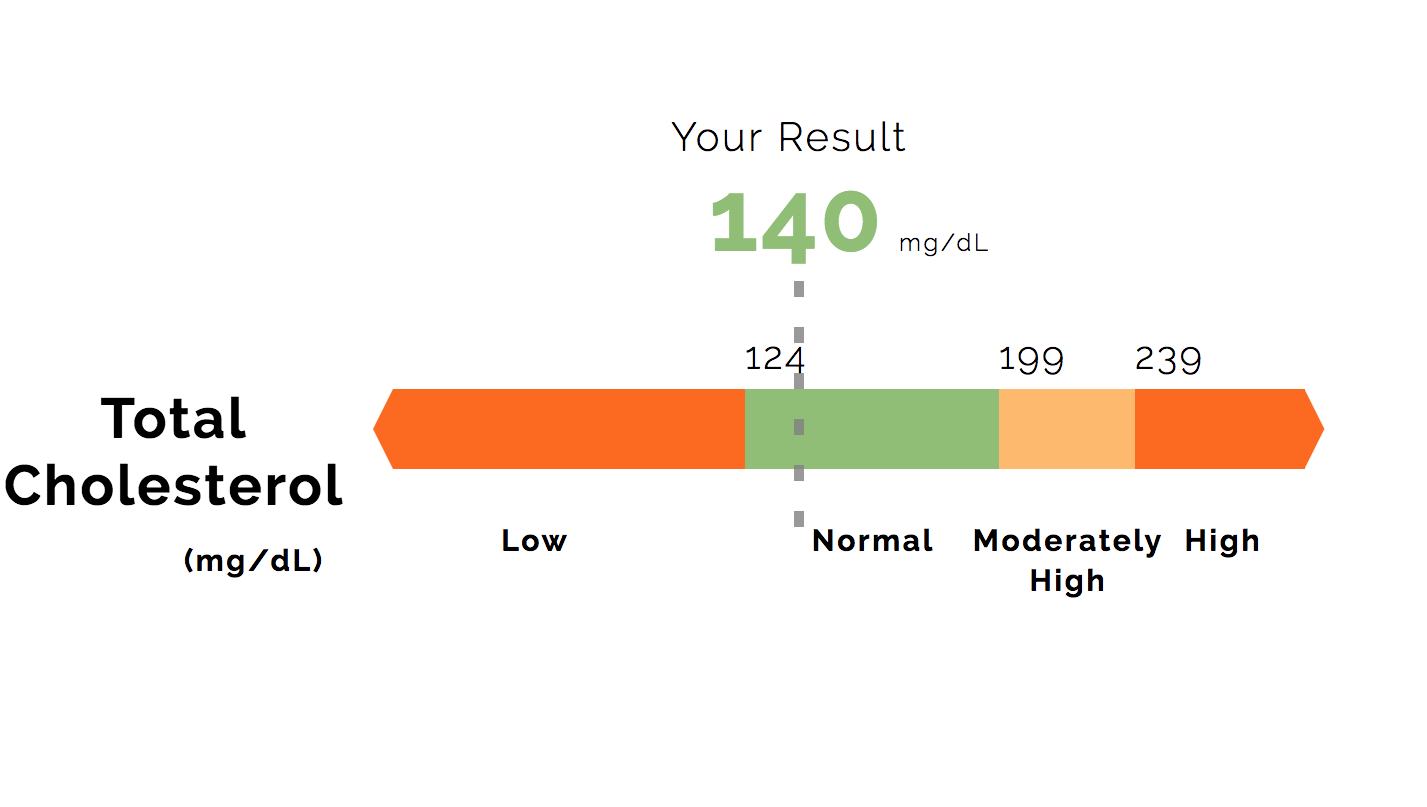
How to Bring High Blood Sugar Down Quickly
Everyone living with diabetes is bound to experience high blood sugars (hyperglycemia) sometimes. There are simply too many variables out of our control to prevent high blood sugars from ever happening.
But the best thing we can do when blood sugar spikes happen is to help them come down into a normal range as quickly as possible.
Here are four things you can do to bring a high blood glucose level down quickly.
Table of Contents
If you take insulin…
For people with diabetes who take insulin, insulin will always play a major role in how you correct a high blood sugar. There are several things to keep in mind when you use insulin to correct a high blood sugar.
First, check your ketones
If you live with insulin-dependent diabetes, high blood sugars can put you at risk of developing ketones. Blood sugar levels over 250 mg/dL with too little insulin can quickly turn into diabetic ketoacidosis (DKA) if it continues to rise.
Test your urine for ketones, and contact your doctor or visit an urgent care facility if you measure with “moderate to large” ketones.
When large ketones are present, correcting a high blood sugar with insulin via pump or injection won’t be effective. Instead, you’ll likely need intravenous fluids for a few hours to restabilize.
If you only have moderate ketones or less, you may be able to correct with insulin at home but you’ll likely need a larger dose than normal. Contact your healthcare team if you test positive for ketones and are unsure of how to safely manage the situation.
You can learn more in our guide: What Levels of Blood Sugar are Dangerous
Take a correction insulin dose
For those who take fast or rapid-acting insulin — Novolog, Humalog, Apidra, Fiasp, Admelog, Afrezza — you can take a “correction” dose to bring a high blood sugar down.
A “correction factor” is determined with support from your healthcare team.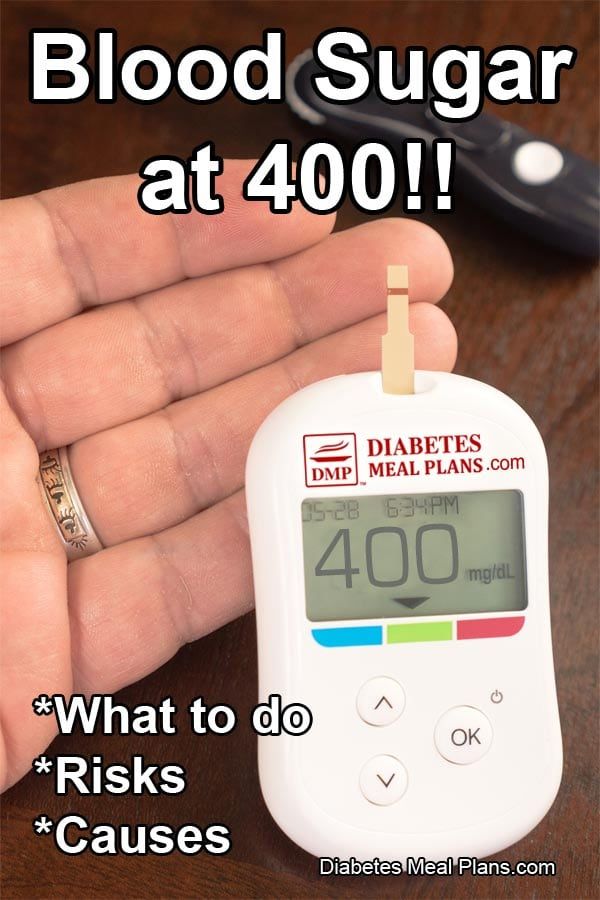 This number tells you how much 1 unit of fast or rapid-acting insulin will lower your blood sugar. For example, a correction factor of 1:50 means that 1 unit of insulin will lower your blood sugar by 50 points.
This number tells you how much 1 unit of fast or rapid-acting insulin will lower your blood sugar. For example, a correction factor of 1:50 means that 1 unit of insulin will lower your blood sugar by 50 points.
It’s important to keep in mind how much insulin you may already have on board in your bloodstream before taking an additional dose of insulin.
Most fast and rapid-acting insulin stays in your system for approximately 3 to 4 hours, which means taking an additional dose of insulin to correct a high could lead to a severe low blood sugar if you already have a significant amount of insulin from your most recent dose still in your bloodstream.
Also, remember to give that correction dose of insulin at least two hours to make an impact on your blood sugar before getting frustrated and taking another injection. You won’t see a significant improvement in your blood sugar until it’s been in your system for at least 1 to 2 hours (unless you use ultra-fast insulins like Afrezza).
Take an “intra-muscular” injection
Insulin was designed to be injected into body fat, but if your blood sugar is high, injecting that “correction dose” of insulin into muscle can help.
When you inject insulin into muscle, it’s absorbed more quickly. This is not something you should do on a daily basis — it will likely leave bruising and again, is not how insulin is supposed to be taken for your everyday insulin needs. But for those severe highs (blood sugar reading over 250 mg/dL), it could be a useful option.
Discuss “intra-muscular” injections with your healthcare team before adding them to your diabetes management regimen.
Consider using inhaled insulin
Afrezza is a rapid-acting inhaled insulin that some people with type 1 or type 2 diabetes find to be very useful for treating high blood sugar levels.
Inhaled insulin is as effective at lowering blood sugar levels as regular insulin but works a lot quicker.
It is probably not going to replace all of your insulin needs, but many are using it in addition to their normal insulin via syringe, pen, or insulin pump because of how quickly it starts working in your bloodstream.
It’s fairly easy to use but the results and experience of using it can differ from person to person.
Ask your healthcare team for more information about Afrezza.
Beware of low blood sugars
Remember, above all else, it’s very easy to over-treat a high blood sugar with insulin and wind up low. Then you’ll be tempted to binge-eat and wind up high again. This blood sugar roller coaster is exhausting — and dangerous, too.
Frequently finding yourself on the blood sugar roller coaster means your approach to taking insulin and/or how you treat low blood sugars isn’t working and needs some fine-tuning. Work with your healthcare team to reduce and prevent these wild swings to ensure your overall safety and quality of life!
Take any missed medications
Your doctor may have prescribed other medications to help keep your blood sugar in a normal range.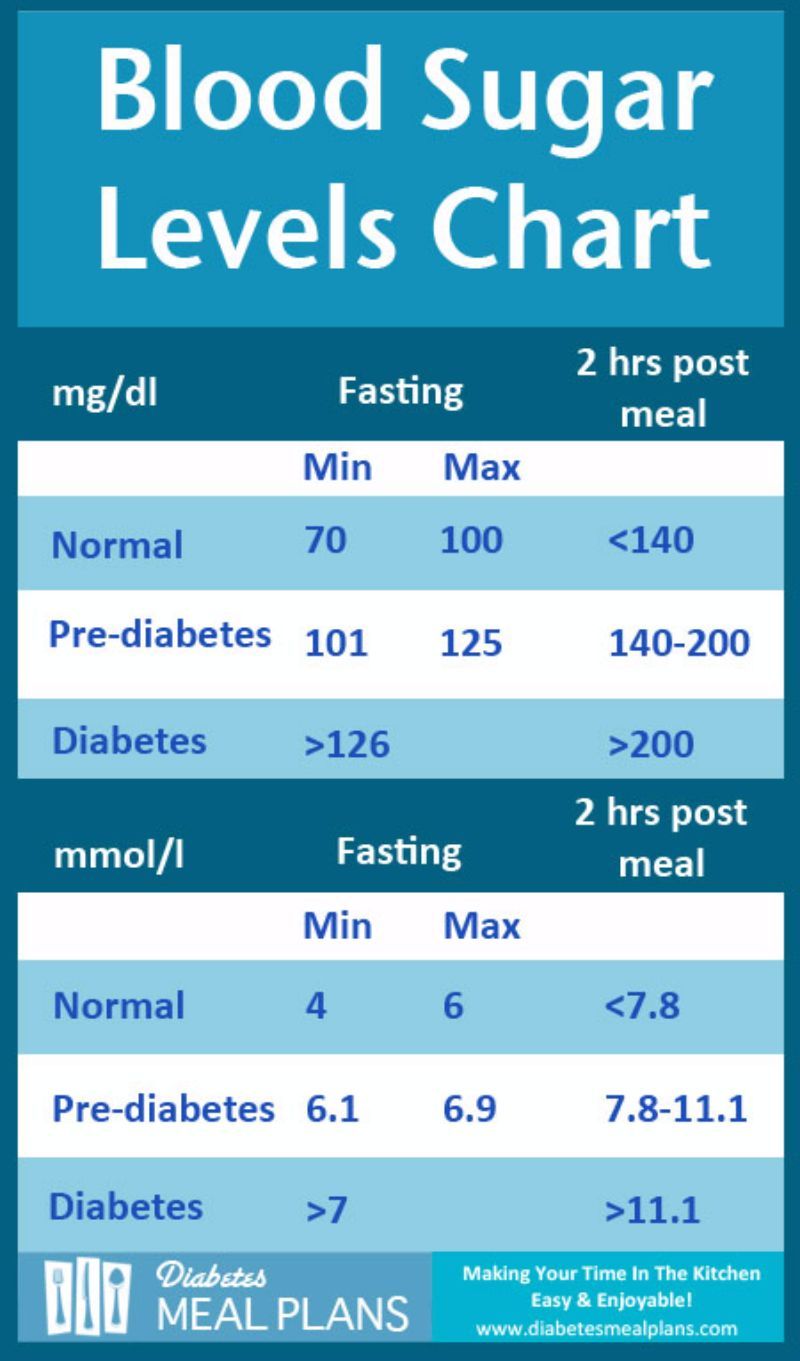 Check that you haven’t missed a dose.
Check that you haven’t missed a dose.
If you have missed a dose, take it as soon as possible, as long as you don’t “double up” on your medication. This means that if your missed dose was several hours ago and your next scheduled dose is in 1 hour, you shouldn’t take both doses so close together.
Taking two doses on top of each other can cause adverse reactions with some drugs. Instead, just take your next scheduled dose now.
If in doubt, consult the guide on the packaging of the medication or contact your medical team.
Other things you can do
Even if you don’t take insulin, there are several things you can do to bring a high blood sugar down to a healthier range more quickly. Let’s take a look.
Exercise (even just 10 or 15 minutes)
Physical activity can be a very effective method of reducing a high blood sugar.
If you don’t take insulin, exercise can be a very simple approach to reducing high blood sugar levels. Even just a 15-minute walk can have a big impact on your blood sugar.
Even just a 15-minute walk can have a big impact on your blood sugar.
If you do take insulin, it’s important to know that exercising when your blood sugar is above 250 mg/dL and without enough insulin in your system can actually result cause your blood sugar to rise further and put you at risk of developing ketones.
If you already test positive for ketones using a urine strip, you should not try to lower your blood sugar by exercising. This will only increase your ketone level and put more stress on your body.
First, you’ll need a correction dose of insulin but if you plan to exercise, too, you’ll likely be advised by your healthcare team to reduce the correction dose by 50 to 75 percent to prevent a subsequent low blood sugar.
Drink some water!
Dehydration can cause high blood sugars, which means getting hydrated can help prevent and reduce high blood sugars.
Your blood consists partly of water. When you don’t drink enough water throughout the day, the other things in your blood (like glucose) become more concentrated! And thus, higher blood sugar levels.
You know that uncomfortable thirst you feel when your blood sugars are high? Give in to it. This is how your body helps flush excess sugar out through your urine, and how you replenish the necessary fluid balance in your bloodstream.
Can oral medications help bring down high blood sugar?
While any oral medications you take to help manage your diabetes (like Metformin) do improve your blood sugar levels, they are not something you would take an “extra dose” off to correct an occasional high blood sugar level.
However, if you realize that you forgot to take your dose of a daily medication, this should be part of the process of bringing your high blood sugar down.
Some medications can be taken late, and some medications may need to wait until your next normally scheduled dose. Contact your healthcare team to determine if the diabetes medication you take can be taken late after missing your usual dose.
If you have been skipping this medication altogether — for days or weeks — it’s very likely a significant contributor to the reason your blood sugar is high.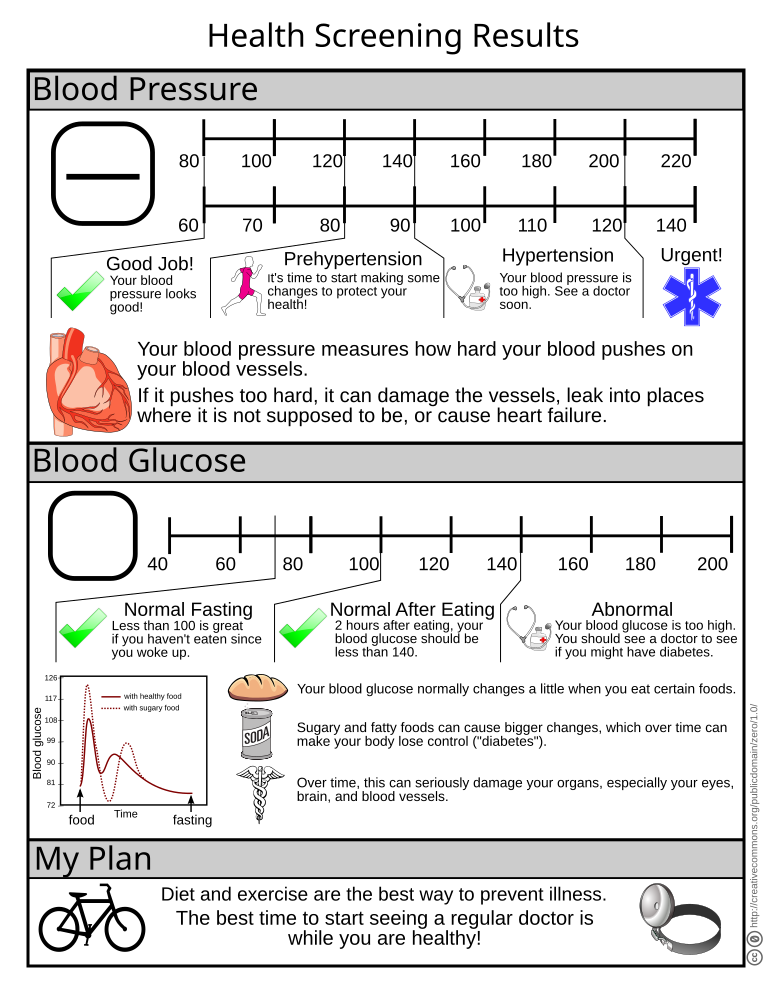 These medications are designed to improve your blood sugar levels in a variety of different ways.
These medications are designed to improve your blood sugar levels in a variety of different ways.
Talk to your healthcare team to better understand the medications you’ve been prescribed and the issues you’re having in taking them as directed.
When to go to the ER
If you have type 1 diabetes, blood sugar levels over 250 mg/dL accompanied by large ketones and/or symptoms of DKA is a medical emergency and will likely require a trip to the ER for intravenous fluids.
Let’s take a look at the symptoms of ketosis based on how high your ketone levels are.
Small to moderate ketones (ketone levels between 10 to 20 mg/dL):
- Increased thirst
- Frequent urination
- Lack of energy
- Craving sugar
Large ketones / DKA (ketone levels over 20 mg/dL):
- Severe nausea & vomiting
- Severe thirst
- Frequent urination
- Severe fatigue
- Blood sugar levels that won’t budge
- Craving sugar
- Rotten-fruit smelling breath
If you are puking from a stomach bug, along with high blood sugar levels, you should absolutely go to the ER.
Preventing high blood sugars
Everyone with diabetes experiences high blood sugars sometimes — there are simply too many variables in the human body out of your control to prevent them altogether.
That being said, there are a few blood sugar management guidelines we can all follow to minimize the frequency of high blood sugars:
- Avoid full-sugar beverages including soda, juice, coffee drinks, iced tea, etc.
- Choose your carbohydrates carefully — starchy carbs from pasta, candy, bread, desserts, etc. will spike your blood sugar the most
- Take your medications as prescribed — and contact your healthcare team if you miss a dose to determine if you can take it late
- Exercise daily — even a 20-minute walk makes a big difference on a daily basis
- Drink plenty of water to prevent dehydration
And of course, if you’re experiencing high blood sugars are a daily basis and you’re unsure of the cause, talk to your healthcare team about making adjustments in your diabetes management regimen. A slight increase in your medications can have a big impact!
A slight increase in your medications can have a big impact!
Frequently Asked Questions
How long does it take for blood sugar to go down?
It depends on what you are doing to get it down. Rapid-acting insulins such as Afrezza will start to bring your blood sugar down in as little as 15 minutes while it takes about an hour for regular insulins to start lowering your blood sugar.
Oral diabetes medications take several hours or even longer to start working, which is why they are poor choices to treat urgent high blood sugars.
What foods can lower blood sugar quickly?
There are no foods that will lower your blood sugar. If you have to eat while your blood sugar is high, choose small amounts of protein or fat. Avoid carbohydrates like bread, pasta, or fruit that will increase your blood sugar even further.
How to Avoid Diabetic Ketoacidosis (DKA)
It might have been a really long time since you’ve been in diabetic ketoacidosis (DKA), or maybe you’ve never had it.
But if you have Type 1 diabetes, you are at risk. Sometimes when you haven’t recently experienced a situation, you kind of forget about what you were told to do for prevention or treatment. That’s why a refresher might be a great idea!
Signs you are experiencing diabetic ketoacidosis
If you are in DKA, it’s likely that you are nauseous or vomiting. Your breath may have a fruity or acetone odor as your body tries to offload ketones through your breathing. It’s likely that you will be dehydrated with very high BG levels and excessive urination. You might have aches and pains, and perhaps blurred vision. Not fun!
DKA is serious, and can be life-threatening. Because of dehydration and excessive ketone production, the blood becomes acidic. This is caused by a lack of working insulin. Most cells preferentially burn glucose for fuel. Many cells can also burn fat in small amounts. While glucose burns “cleanly,” fat produces waste products called ketones. Ketones are acid and upset the pH balance, essentially polluting the atmosphere in our bodies.
Ketones are acid and upset the pH balance, essentially polluting the atmosphere in our bodies.
We don’t tend to burn much fat at a time, so small amounts of ketones can usually be broken down and burned off along with glucose. It’s necessary to have enough glucose in the body cells so there is a fuel source, and we also need to have insulin to move the glucose into the cells, where it can be used for energy. If there is no insulin, the glucose can’t get inside the cells. The cells are then forced to burn fat as an energy source, and this causes large amounts of ketones to be produced.
Although some ketones will be eliminated through the urine, there will be too many ketones in the bloodstream and it will be too acidic. This is made worse by dehydration. The liver will make too much sugar, and BG levels will be high. This will cause excessive urination, and dehydration occurs. It doesn’t sound pretty, does it?
A few different things can cause a deficiency in insulin
1. Sickness – Stress hormones are produced in response to illness, infection, and dehydration, and stress hormones work against the action of insulin. When you are sick, your insulin doesn’t work as well because it’s being impeded by the stress hormones.
Sickness – Stress hormones are produced in response to illness, infection, and dehydration, and stress hormones work against the action of insulin. When you are sick, your insulin doesn’t work as well because it’s being impeded by the stress hormones.
When you are sick, you need to stay hydrated and may need as much as double your usual amount of insulin.
2. No insulin – Forgetting to take insulin, especially basal insulin, will get you in trouble with ketones. Chronically missing or skipping mealtime insulin will also cause high blood sugar and lead to ketone development.
3. Spoiled insulin – Insulin can spoil if it is exposed to temperature extremes or if it is too old. Know how long you can use your insulin once the pen or vial is opened, and discard it when it is at the end of its useful lifespan. It’s also possible that you can become insulin deficient when your insulin is sitting in the tissues and not absorbing into the body where it can be used, so be methodical about rotating your sites.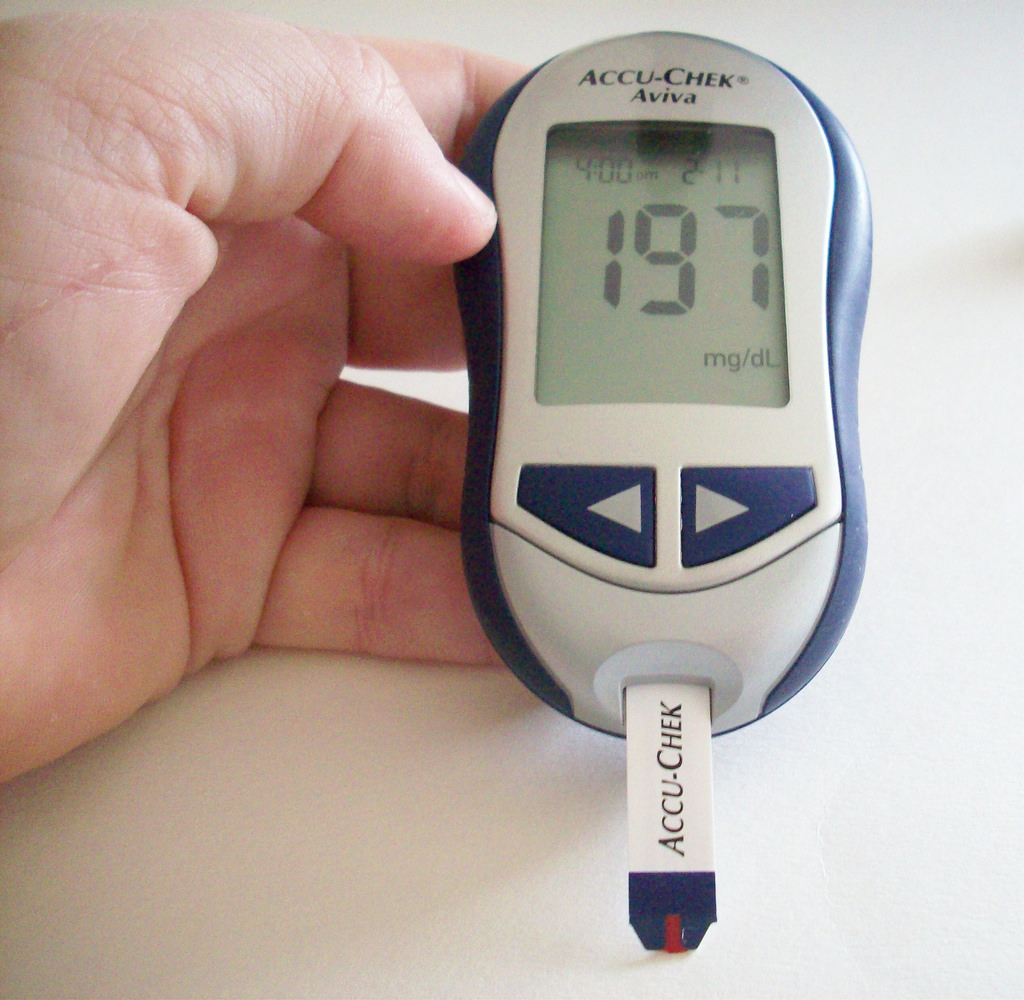
4. Pump malfunction – If you are on an insulin pump and it malfunctions, you will be insulin deficient within 3-4 hours after the last insulin was received, because there is no long-acting insulin. We are relying on small pulses of rapid-acting insulin to function as basal insulin. If this delivery is interrupted, it doesn’t take long for a sharp rise in BG to occur, and for ketones to be produced. Therefore, it’s especially important to be vigilant and quick to identify problems when you are on a pump.
What can cause this interruption? There are many “points in the pipeline” where things can go awry:
- Mal-absorption of insulin from the infusion site
- Tubing or infusion set clogs (referred to as occlusions)
- Leaking during a bolus – improper connection between set and cannula OR a site that leaks around the cannula
- Spoiled insulin
- A malfunction of the pump
- Pump suspended or disconnected for a prolonged period of time
- Erased basal settings
- Air in the tubing
- A leak where the cartridge connects to the tubing
- A dislodged cannula
With an insulin pump, any time you have an unexplained high BG, check for ketones. This is best accomplished with a meter that allows you to check for blood ketones, because it is a more “up to the minute” assessment of your status.
This is best accomplished with a meter that allows you to check for blood ketones, because it is a more “up to the minute” assessment of your status.
A value of 0.6 mmol/l or more on a blood ketone check is considered significant and actionable. If you can’t check for blood ketones, check for urine ketones. Take action if the ketone amount is small or more (>15 mg/dl). There is a lag time for ketones to show up in the urine, but it still gives us an idea of your status. By the way, urine sticks in vials are good for 6 months after the vial is opened, or the expiration date, whichever comes first.
If the BG is high and ketones are negative, it’s likely that you probably just had insufficient insulin coverage for food that was eaten recently. Bolus with the pump and watch to make sure the BG comes back down. But if the ketones are positive (or you don’t respond to a correction bolus), it’s more likely that you have a problem with the pump, unless you know that you are dealing with illness or infection.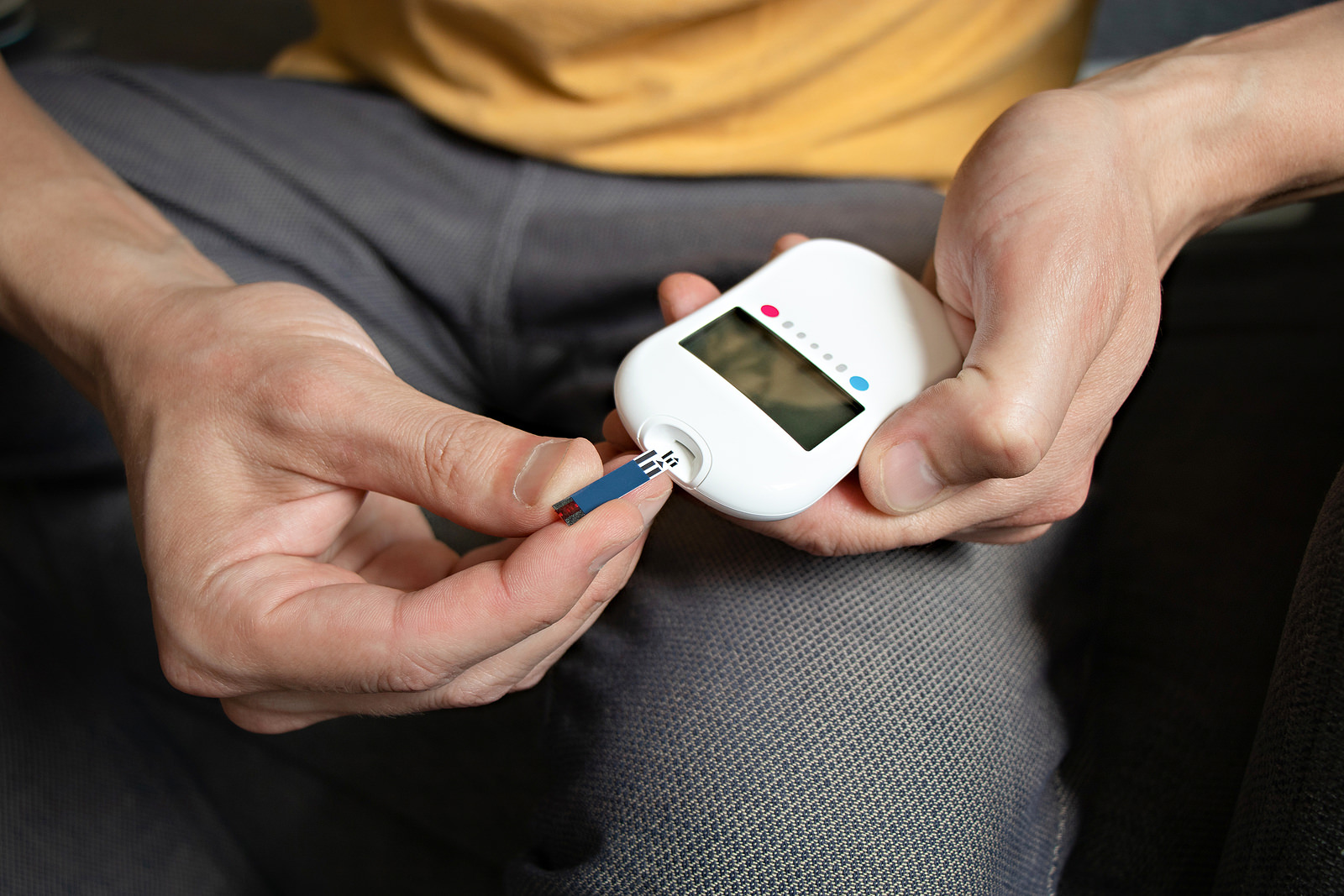 Now we need to be quick to spring into action.
Now we need to be quick to spring into action.
There are 3 things you need to do
- Take an injection with a syringe or a pen, using your usual correction formula. This way, you can bypass the pump and be certain that this correction dose gets into your body. If you have a pump with tubing, you can bolus this amount that you have actually given by injection into the trash can so that your pump tracks your insulin on board accurately…genius! Hint: giving this injection into a muscle instead of into fatty tissue will help to get the BG down more quickly. So will adding a little heat to the equation, like taking a warm shower or massaging the injection site.
- Drink water, lots of it. Hydrate so your urine is a light lemonade color. Flush out those ketones!
- Change out everything – open a fresh vial of insulin and get new tubing, cartridge, and infusion set. Don’t go right next door to where the last infusion set was, either – move to a new area and make a fresh start.

In order to avoid having trouble with the pump’s insulin delivery, limit periods of disconnection or suspension to less than an hour. If you need to be disconnected longer than that, reconnect hourly and bolus for the basal insulin you will miss in the upcoming hour. It also pays to check your site and tubing at least once a day so you can promptly address any problems you might find, such as loose adhesive, a bloody site/cannula or air bubbles in the tubing.
The system should be airtight, so smelling insulin when you are not in the midst of a site change is a huge clue that something is wrong. Be attentive to alerts and alarms from your pump, since you don’t want to miss a message that the insulin didn’t deliver or there was a blockage.
Pay attention to how much insulin remains so you don’t run out of insulin. Be sure you change your site at least every 72 hours, and rotate your sites in an organized, methodical way so you don’t repeat the same spots too often, since this can lead to scar tissue and poor insulin absorption. If you use room-temperature insulin, you are less likely to get air bubbles when you fill your reservoir.
If you use room-temperature insulin, you are less likely to get air bubbles when you fill your reservoir.
Occasionally you may have a pump malfunction, and you might not be able to retrieve the settings out of the pump. This is why it’s so important to maintain a written record of your current pump settings, and know where that list is at all times. Try to download your pump weekly, this will be a place you can look for your pump settings if the pump malfunctions and you have to reset a replacement pump.
If you do have ketones or are experiencing symptoms of DKA, you need to make your diabetes doctor (or nurse practitioner or physician’s assistant) aware of this right away. You need help to manage this, and will likely need to go to the hospital for intravenous fluids and to manage your electrolytes. The acidity level of your blood will need to be carefully monitored. That’s why prevention is so important!
Anyone with Type 1 diabetes is at risk for DKA, but the risk is higher for pump users. It pays to stay vigilant and be quick to intervene when BGs are high and corrections are not working. An ounce of prevention is worth a pound of cure!
It pays to stay vigilant and be quick to intervene when BGs are high and corrections are not working. An ounce of prevention is worth a pound of cure!
Hyperglycemia in diabetes mellitus – Humanitas
Elevated blood sugar (hyperglycemia) accompanies diabetes mellitus. A number of factors contribute to the development of hyperglycemia in diabetes, including the consumption of certain foods and physical activity, other diseases, the use of non-diabetic drugs, or the use of insufficient drugs to lower blood glucose levels.
Hyperglycemia must be treated because, if left untreated, the disease becomes severe and leads to severe complications requiring urgent intervention, such as diabetic coma. Long-term persistent hyperglycemia, even in a mild form, can lead to the development of complications with damage to the eyes, kidneys, nerves and heart.
Symptoms
Symptoms of hyperglycemia do not appear until there is a significant increase in blood glucose – more than 200 milligrams per deciliter (mg/dL) or 11 millimoles per liter (mmol/L). Symptoms of hyperglycemia develop slowly over several days or weeks. The longer elevated blood glucose levels persist, the more severe the symptoms.
Symptoms of hyperglycemia develop slowly over several days or weeks. The longer elevated blood glucose levels persist, the more severe the symptoms.
Signs and symptoms in the early stages
Recognizing the symptoms of hyperglycemia in the early stages allows timely treatment. The following manifestations should be observed:
- Frequent need to urinate
- Increased thirst
- Blurred vision
- Fatigue
- Headache
Advanced signs and symptoms:
Left untreated, hyperglycemia can cause an increase in the levels of poisonous acids (ketones) in the blood and urine (ketoacidosis). Signs and symptoms include:
- Fruity breath
- Nausea and vomiting
- Choking
- Dry mouth
- Weakness
- Confusion
- Coma
- Abdominal pain
Conditions requiring medical attention
Seek emergency medical attention if: 22
In the following cases, you need to make an appointment with a doctor:
- In case of prolonged diarrhea or vomiting while maintaining the ability to eat and drink
- If fever persists for 24 hours
- Blood glucose levels remain above 240 mg/dL (13 mmol/L) even with diabetic drugs
- Blood glucose is abnormal
Complications
Long-term complications
If left untreated, hyperglycemia can cause long-term complications.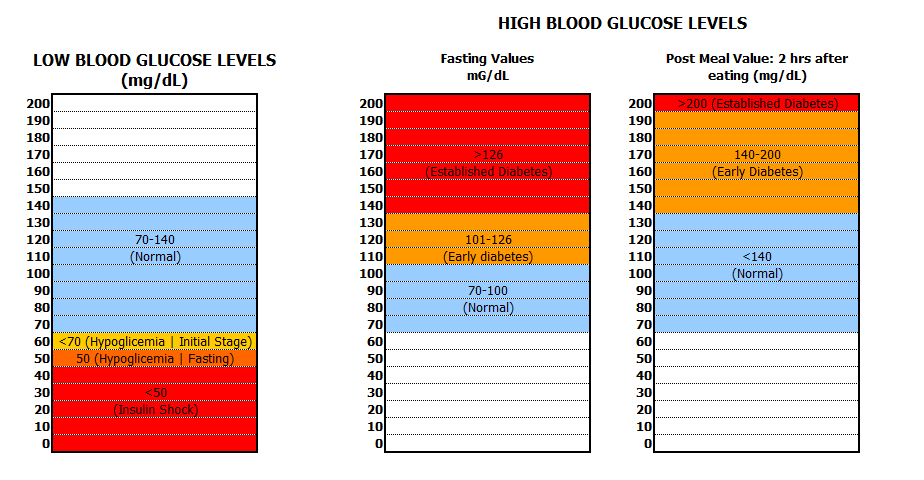 These include:
These include:
- Cardiovascular diseases
- Damage to the nervous system (neuropathy)
- Kidney disease (nephropathy) or kidney failure
- Damage to the blood vessels of the retina (diabetic retinopathy) with possible blindness
- Clouding of the healthy lens of the eye (cataract)
- Diseases of the feet caused by damage to the nerve endings or insufficient blood flow, leading to the development of severe infectious diseases
- Diseases of bones and joints, e.g. osteoporosis
- Skin diseases, including bacterial and fungal infections, and non-healing wounds
- Infectious diseases of the teeth and gums
Complications requiring emergency medical attention
High blood sugar for a long time leads to the development of two serious pathological conditions.
Diabetic ketoacidosis . Diabetic ketoacidosis develops when there is a lack of insulin. With a lack of insulin, sugar (glucose) does not enter the cells, thus disrupting energy production. Blood sugar levels rise, and the body begins to break down fats for energy.
Blood sugar levels rise, and the body begins to break down fats for energy.
As a result, toxic acids are formed – ketones. Excess ketones accumulate in the blood and eventually fill up the urine. Untreated diabetic ketoacidosis can cause diabetic coma and is life threatening.
Diabetic hyperosmolar syndrome. This condition occurs when there is a malfunction of the produced insulin. The blood glucose level reaches a very high value: more than 600 mg/dL (33 mmol/L). Since insulin is present in the blood but cannot function properly, the body cannot use glucose or fat for energy.
Thus, there is a release of glucose into the urine and, as a result, an increase in urination. Left untreated, diabetic hyperosmolar syndrome leads to coma and life-threatening dehydration. It is important to provide medical assistance in a timely manner.
what to do? Medical On Group Krasnoyarsk
Often patients, seeing their glucose levels, for example 5. 1-5.5 mmol / l, believe that they have normal sugar levels and there are no problems. But, unfortunately, over the past decade, the bar for glucose has increased greatly, as we eat a lot of refined foods, and the number of patients with diabetes is becoming more and more. Many do not know that at this level of sugar, changes in the body have already begun, insulin resistance appears, which is manifested by chronic fatigue syndrome, dry skin, the appearance of rashes and papillomas on the skin, the appearance of cysts in various organs, and weight gain. And this process can still be stopped by changing the diet, daily routine and introducing certain nutraceutical helpers. So that you understand how serious the issue is, look at what values \u200b\u200byou should have: fasting blood glucose no more than 4.7 mmol, glycated hemoglobin no more than 4.9%.
1-5.5 mmol / l, believe that they have normal sugar levels and there are no problems. But, unfortunately, over the past decade, the bar for glucose has increased greatly, as we eat a lot of refined foods, and the number of patients with diabetes is becoming more and more. Many do not know that at this level of sugar, changes in the body have already begun, insulin resistance appears, which is manifested by chronic fatigue syndrome, dry skin, the appearance of rashes and papillomas on the skin, the appearance of cysts in various organs, and weight gain. And this process can still be stopped by changing the diet, daily routine and introducing certain nutraceutical helpers. So that you understand how serious the issue is, look at what values \u200b\u200byou should have: fasting blood glucose no more than 4.7 mmol, glycated hemoglobin no more than 4.9%.
What happens in our body after eating?
In the blood, the level of glucose rises, it must get all into the cells for the formation of energy. To do this, the hormone insulin is released when we eat a lot of food very often, or is it refined, sweet food – there is so much sugar in the blood that it clings to the cells and changes their structure, and insulin cannot “drive” glucose into the cell. Cells are hungry, they give a signal to the body that we want to eat, even more insulin begins to be produced for this, insulin resistance develops. You want to eat even more, you eat a lot of easily digestible food (carbohydrates), but at the same time you feel weak and weak, tired, lack of strength.
To do this, the hormone insulin is released when we eat a lot of food very often, or is it refined, sweet food – there is so much sugar in the blood that it clings to the cells and changes their structure, and insulin cannot “drive” glucose into the cell. Cells are hungry, they give a signal to the body that we want to eat, even more insulin begins to be produced for this, insulin resistance develops. You want to eat even more, you eat a lot of easily digestible food (carbohydrates), but at the same time you feel weak and weak, tired, lack of strength.
Muscles on the background of insulin resistance cease to break down the fat accumulated in them, and proteins cannot pass through the sugared cell. As a result, the muscles starve and begin to “devour” each other, the so-called obesity sarcopenia develops.
The main thing to understand is that insulin resistance is not only the destiny of overweight people, often a slender patient with certain types of examinations gives the result of a minimum amount of muscle tissue, which is replaced by fat.

